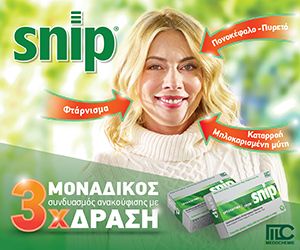
Nicos Angelides MD, PhD, FRCS, FACA, Emeritus FIUA, FESA
Ex-Director Cardiovascular Surgical Unit Nicosia General Hospital
Visiting Professor Nicosia University
PART A. Introduction.
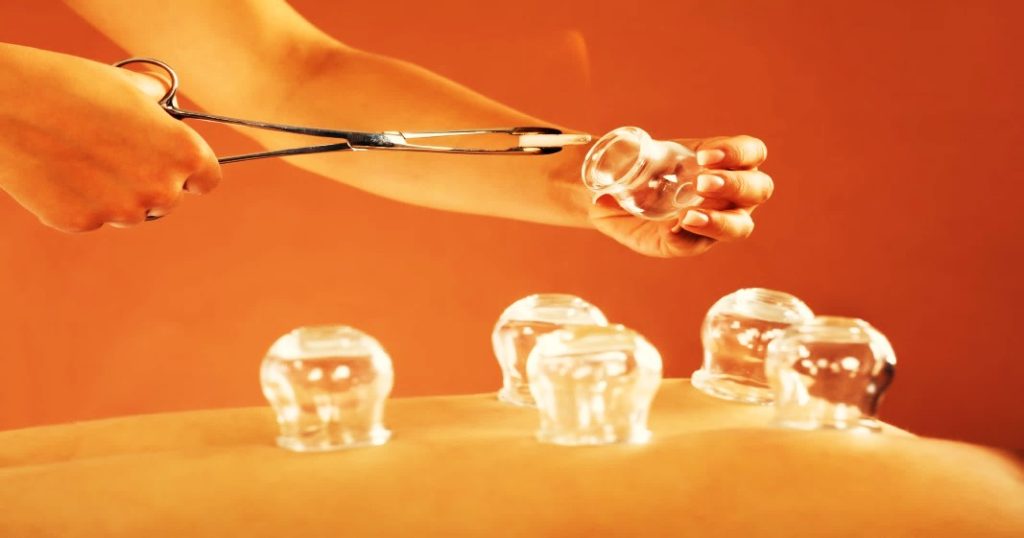
The earliest practice of medicine in Cyprus was theocratic, and common to all primitive people. The approach to the disease was magic, mystery, and superstition.
Priests were considered also as doctors and Illness was believed to be the action of evil spirits. The usual treatment applied by the early “medicine man” was the use of fire, sometimes noises and mainly offerings to the gods in an effort to drive away the “bad spirits”! Therefore, the practice of healing in ancient times was imperfect and its progression was very slow.
Cupping therapy was part of ancient Cyprus Medicine and was used for treating the ordinary cold. This kind of therapy is still in use in some villages.
Diseases were sent by gods to punish the mankind
According to the Hellenic mythology, the history of “healing” began with the action of Apollo, god of light and promoter of health. However, in Homer’s “Iliad” this god was also considered as disperser of epidemics, like the one that spread upon the Greek army before the departure to Troy.
Asclepius was considered the god of Health.
As mentioned already Asclepius lived in the thirteenth century BC. According to Greek mythology his teacher was Chiron the Centaur, who taught medicine by god Apollo and goddess Artemis. The symbol of Asclepius was a serpent around a knotted staff. Serpents produce poison and diseases in the ancient times were looked like poisoning. However, serpents have also the reputation of wisdom and the power of renovation. That is why a serpent became the symbol of Asclepius.
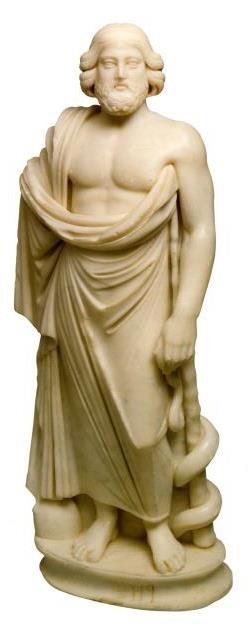
Fig 1: a statue of Asclepius, the god of Medicine, found in Cyprus. His symbol was a serpent around a knotted staff
Although a lot of mythology is involved with the history of Asclepius, there were also a lot of solid facts: These were the splendid temples that were devoted to him, always built in lovely places either on a hill or near a spring or a river. These temples were visited by sick people, and this can explain why the priests learned also the art of healing.
Only by the end of the 5th century BC, Greek philosophers and doctors began to teach that the cause of any disease could be found in nature as well as in the mechanisms of the body and in the surroundings of the mankind!
Hippocrates, the father of Medicine (460 BC-377 BC).
Hippocrates was born in the island of Kos. He is considered as the Father of Medicine. According to Mythology, he was a descendant of Zeus and Hercules from his mother, and a descendant of Asclepius from his father. As mentioned already, Hippocrates rescued medicine from theocracy and speculation and begun to collect data about diseases! He did what not any previous physician had ever done: He examined the sick carefully, recording the signs and symptoms of the disease and giving emphasis on the evidence than on spiritual causes! He did not ask “Who is causing a particular sickness?” but «how and on what process does this particular sickness occur?”
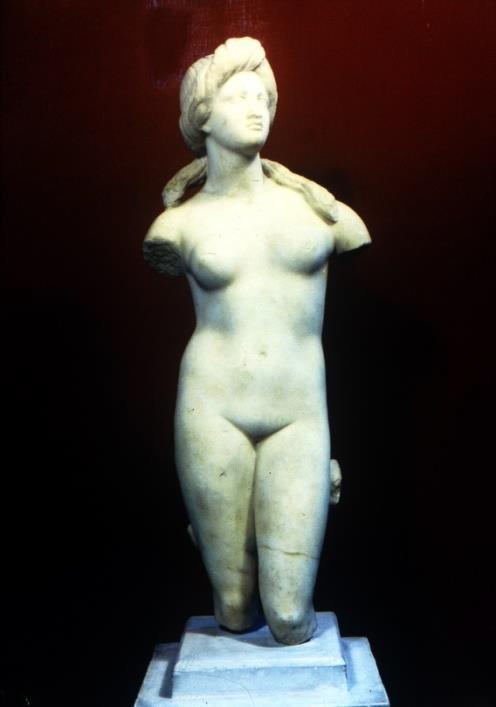
Fig 2: Goddess Aphrodite was born in Paphos, Cyprus, and had power over health. She belonged to the “Greek healing gods”, with Apollo, Asclepius and Hygeia. Statues of these “healing gods” were found in many archaeological excavations in Cyprus.
PART Β. The beginning of ancient Cypriot Medicine.
The history of ancient Cypriot Medicine started at the time of Hippocrates. Sources of information were the various archaeological findings, scattered here and there in the island; the writings of ancient Greek philosophers, as well as ancient inscriptions.
No doubt, Cyprus has a long standing medical history. So, the aim in this presentation was to shed light on Medicine and Pharmacology developed in the island through centuries and to look at the botanies and at other means of healing that were in use therapeutically in the island.
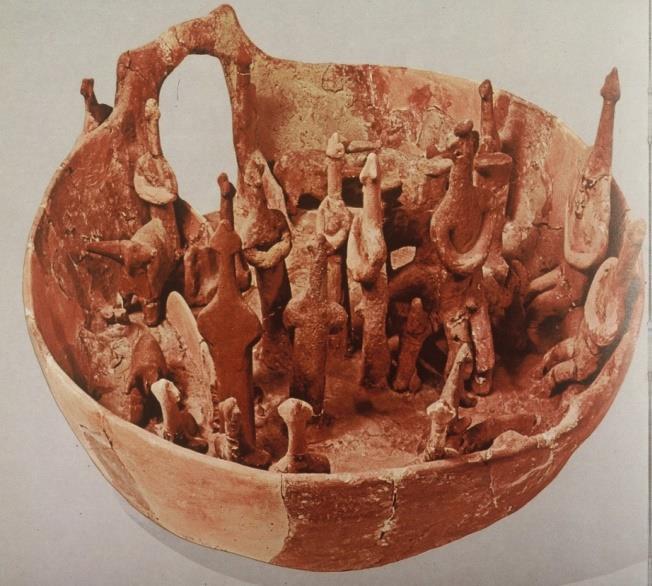
Fig 3: This is an open-air ceremonial gathering, made from terracotta. (Found in Cyprus at a place called “Vouna”; it is considered universally unique).
It was said already, that ancient medicine flourished in Cyprus in a parallel way as in Greece. Towards this issue helped the common language, the fact that numerous Cypriot doctors were students of Hippocrates, as well as the fact that the botanical and mineral environment of Cyprus is superior to that of Greece in producing drugs.
As historical sources, are considered several ancient philosophers of the caliber of Homer and Aristotle and numerous ancient inscriptions. Ancient inscriptions, were a source of information, as for example the “inscription of Idalion”, which provide strong evidence concerning the practice of Medicine and pharmacology in Cyprus.
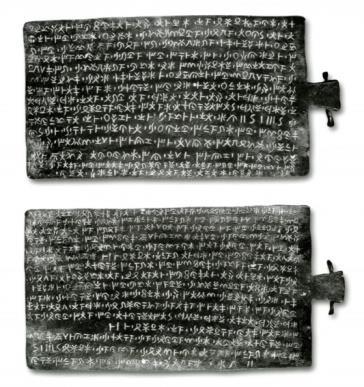
Fig 4: “Inscription of Idalium”
From the “inscription of Idalium” which is the oldest and longest ancient written document found in Cyprus, we learned that Stasikipros, the king of the town Idalium which is situated in between Nicosia and Larnaca, signed an agreement with a doctor named Onasilos to treat, free of charge, all soldiers that were wounded in the battles during the siege of Idalium by the Persian army. (5th century BC.)
The war ended with an unexpected victory of the Cypriot army and the king honored Onasilos and his brothers offering them as a price fields and political posts.
Sinesios the Cypriot: An Angiologist!
Another Cypriot doctor was Sinesios or Siennesis, as mentioned by Aristotle in his book “fat veins”. He lived at the 4th century BC, and wrote several medical books, especially on arteries and veins.
Apollonius kitiefs invented an anti-poison treatment called “mithridadism”.
Another famous Cypriot doctor was Apollonius, who lived in the 1st century B.C. His teacher was Zoopirus from Alexandria. He was known as the “Cypriot Hippocrates” and wrote many medical books. He was also well known for his antidotes to various poisons. That is why Mithridatis, the King of Pontus, had asked him to prepare for his sake a general antidote, in order to avoid poisoning. This preparation was taken in small doses for a prolonged period and since then such way of treatment was called “mithridadism”.
Apollonius had also added a lot of memorandums in the Hippocrates book “On fractures and Joints”: An example is the typical position of a patient for straitening the spine by gravity, as shown in figure 5.
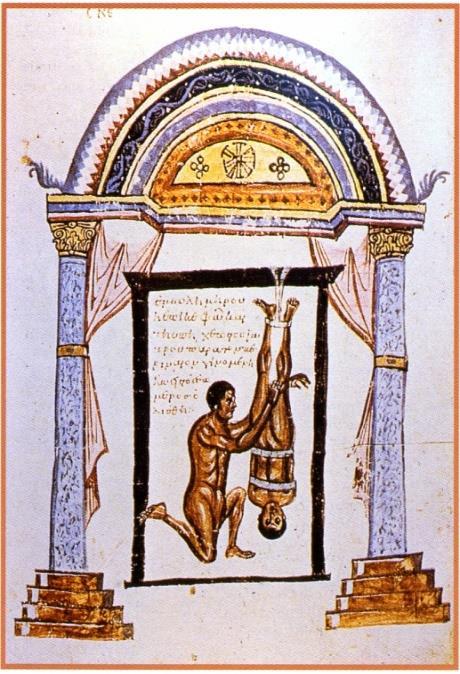
Fig 5: typical position of a patient for straitening the spine by gravity
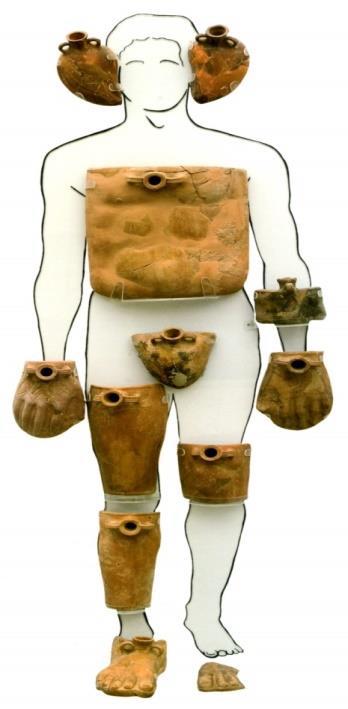
Fig 6: These are the famous “warmers” made from terracotta.
The warmers, a product of Cyprus, could be applied on almost any surface of the body and filled with fluid. They were very popular as a mean of treatment of various diseases in Cyprus.
Other ancient famous doctors of Cyprus
Other ancient doctors were: Apollonides, Onasilaos, Oktaousios, Ktisias Knidius, Skythinus, Numinous Solefs, Phedas and others. Another famous doctor was Zenon the Cypriot (361 AD) who created a medical school in Alexandria. One of his students was Orivasios. The Emperor Julian, in an effort to describe Zenon said “he is not an ordinary doctor, but a teacher also”. Zenon was particularly expert in medical theory and in practicing medicine. He also wrote many books. Unfortunately, none of them survived.
Byzantine Medicine in Cyprus
In Cyprus, the influence of Byzantium lasted from 647 AD to 1191 AD. Byzantine medicine was rather based on common sense than on scientific ideas. The physicians by that period of time supported Christian philanthropy. They developed hospitals and other medical organizations known as “xenones”. Both hospitals and xenones, offered free treatment to all patients regardless of social or economic position.
During Byzantine period the practical medicine became very popular and there was an increasing reliance on cures by Saints! “Iatrosofia”, were some practical ways of medicine, that have been established and passed from mouth to mouth and from generation to generation. These, were very popular and in constant use. Examples of such treatments were:
*Mad, made from a light stone, rubbed on a wet pot from terracotta. It was used for mumps, boils and tonsillitis.
*Drops of warm oil, were used for ear ache and for trachoma, while tea of “zambucus” was used to wash the eyes.
*Cupping, was used to treat the ordinary cold. These were made of glass, they had the shape of a ball with a small opening at one side, through which a piece of cotton on fire was introduced, leading to a negative pressure in the cupping. By applying cupping on the skin of the back at several points, the skin was sucked, leaving a black color on the skin after the removal of the cupping. However, the cold was miraculously subsided and the fever passed away!
*“Mammoudes”, were the practical nurses that were specialized to assist during childbirth, in Cyprus. People in the villages trusted them more than a doctor!
Occupation of Cyprus by the Lusignians (1192-1473)
During the occupation of Cyprus by the Lusignians, doctors were allowed to practice only after permission of a catholic bishop. Ignorance and malpractice where punished, even by death! The Lusignians used affumications, herbs, venesections, cautery, but also astrology as well as pilgrimages to the Saints. A medical doctor was called “doctor of physics”, while “Maestro” (a word originated from “Magistro”), was a title given mainly to surgeons, but also to chief musicians, as well as to chief builders and chief army officials. During the Lusignians occupation of Cyprus some doctors had a significant political involvement in the government. Dr Guido de Pagnolo, an Italian lived in Cyprus, was known as Maestro Gky. He was sent by King Pier the First to Genoa as an emissary to mediate and try to find a compromise on several political issues between the Genoese and Franks. Other doctors were Maestro Pier Vryonas, Maestro Gabriel Zindilis, and Maestro Synglitikos, all Greek Cypriots in origin.
Cypriot Saints and epidemics
Cyprus is known as the island of Saints. Cypriot Saints having the ability to cure were always in demand, particularly by the lower social classes. On the contrary, the higher classes paid for qualified doctors. The Cypriot historian Macheras, wrote that “St Mamas is miraculous, and if I was going to write about his cures, I wouldn’t be able to do it during a human’s life”! Other Saints were thought to cure the epidemics. Examples of epidemics in Cyprus were: epidemic of plague (1348) and the great epidemic of plague, called “mega Thanatico”, which lasted three years around 1470, and killed 75% of the inhabitants.
Venetians (1489-1570)
During this period of time, Cyprus depended on the “Conciglio Maggiore di Venezia”. The government paid the salary of some doctors, whereas others were working as private. In the island there were qualified doctors, midwives and practical doctors, who were practicing mainly venesections. Two foreign doctors are mentioned by name also: Bulien de Nores from a baronial family, and Jane de Rames who was born in Cyprus, but lived and practiced in Padova.
Ottoman Empire (1571-1878)
During the occupation of Cyprus by the Ottoman Empire, there were everywhere many sick people due to the frequent malaria epidemics and to the presence of few qualified doctors only. These qualified doctors were working well and paid well. In addition, doctors were selling drugs for extra income. An important doctor of that period was Aloise Cucci (1625). He was an Italian, a well-informed and wise doctor who lived in Cyprus, but there were many other Cypriot and French doctors mentioned by name, as for example Chatzi-Georgios Chatzi-Liasis (1742) who lived and practiced in Larnaca.
In 1830, both Christian and Muslim citizens of Cyprus became aware of the need to control public health. An example was the fundraising in Larnaca, in order to create an institution to control outbreaks of diseases that were imported through the port. In 1835 the first Quarantine in Larnaca was funded. Dr Antonios Tsepis, a Greek doctor who settled in Larnaca, became in charge of the quarantine (1883–1905). In 1845 another Quarantine in Limassol started functioning. These local efforts, persuaded the Ottoman Sultan to order the establishment of port Quarantines throughout the Ottoman Empire.
British occupation of Cyprus (1878-1960)
The first decades of the British occupation of Cyprus coincided with an era of medical and scientific advances throughout the empire: The colonial outpost provided jobs for British doctors and nurses and as a result Cyprus benefited indirectly. British also encouraged Cypriots to pursue medical careers and Cypriot medical staff was trained abroad during this period. The first formal hospital was created in Larnaca in 1879 and the first doctor appointed was Dr Heidenstam. The second one, the Nicosia Jubilee Hospital, was stoned on 14th April 1933.
Republic of Cyprus (1960- )
Despite of the presence of some inter-communal differences, there was a sudden and serious explosion of Cyprus medical services since 1960. New hospitals started functioning in every town and medical services were provided in the major villages. This allowed Cyprus to reach gradually the existing level of medicine in the European Union, where Cyprus now belongs as a Member State. This amazing explosion of Cypriot Medicine is also connected to the creation of several high standard Medical Faculties which are functioning under the Government of Cyprus as part of Universities and other research organizations on the island.
PART C. Pharmacology: Pedanius Dioscorides (40-90 AD)
Although Hippocrates is considered as the father of Medicine another important figure in the field of Pharmacology is Pedanius Dioscurides employed as physician in the Roman Army. Dioscorides was a Greek physician, pharmacologist, botanist, and author of “De Materia Medica” (About Medicine), which is a 5-volume Greek encyclopedia about herbal medicine and other related medicinal substances, widely read for more than 1500 years.
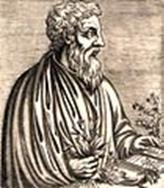
Fig 7: Dioscorides, as depicted in an Arabic edition of “De Materia Medica” (1240 AD)
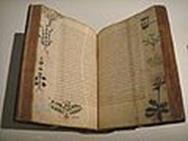
Fig 8: Between 50 and 70 AD, Dioscorides wrote a five-volume book in Greek “On Medical Material”, known in the Western Europe by its Latin title “De Materia Medica”.
The Book “De Materia Medica”
This book was known in the Western Europe by its Latin title “De Materia Medica” (“On Medical Material”). De “Materia Medica” circulated in Greek, as well as in Latin and Arabic translation and became the precursor of all modern pharmacopeias.
Dioscorides’s “De Materia Medica” had never left circulation; in ancient times circulated in Greek, whereas in the medieval period in Latin and Arabic translation. Later on it was reproduced in manuscript form. This allowed supplementation through centuries with commentaries and minor additions from Arabic and Indian sources. Some Greek manuscripts survive and are kept in the monasteries of Mount Athos, Greece.
The importance of “De Materia Medica”
De Materia Medica, is the prime source of information about the medicines used by the Greeks, Romans, and other cultures of antiquity. Dioscorides’s work, presented about 600 plants; however, the descriptions sometimes are confusing and could lead to doubtful results concerning the exact kind of the plans. Anyhow, Dioscurides’s work, was based mainly on empirical tradition and on trials and incorporated some errors; nevertheless, it survived and formed the core of the European pharmacopeia through the centuries.
Diagoras the Cypriot, was mentioned by Dioscorides
A well-known doctor and botanist was Diagoras the Cypriot (3rd century BC). He was mentioned among other Cypriot doctors by Dioscorides with regards to opium use for therapeutic purposes. Diagoras, was specifically interested in pharmacology and he prepared the “Great Collirio” used for exophthalmos, keratitis, eye ache and discharge from the eye. Collirio was also used to cure headache, with the addition of opium into the mixture. Some other Cypriot doctors were also mentioned by Dioscorides.
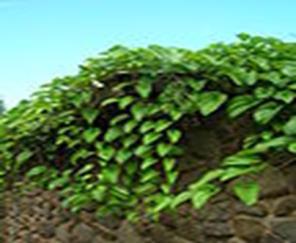
Fig 9: Dioscoria, is a genus of plants including yam; this genus named after Dioscorides by Linnaeus.
Substances that have been used for drug preparation in Cyprus
*Siderite (In Greek: Σιδερίτης)
Siderite, which is also known as “ironwort”, or “mountain tea” or “shepherd’s tea”, is another genus of plans well known for its use as herbal medicine tea. Siderite, was capable of healing wounds caused by iron weapons during battles. It has also been traditionally used to aid digestion, strengthening in parallel the immune system and suppressing common cold.
*Dictamus (In Greek: Δίκταμο).
Dictamus, was used as a mean of healing of wounds and also as a painkiller and as an antidote to snake’s poison. It was considered as a promoter of labor and was used for the treatment of osteoarthritis.
*Chamomile (In GreeK: Χαμομήλι).
Chamomile, was used as herbal medicine tea to treat gastric irritation. It was also used to reduce the menstruation’s pain in young women and to promote diuresis. Chamomile, was used against bronchitis as well as for the common cold. Finally, it was used for wound healing and for improvement of jaundice.
*Rosemary (In Greek: Λασμαρί).
Rosemary, was used to improve memory. It is also considered as a symbol of remembrance. Ophelia, in Shakespeare΄s Hamlet said: “There’s rosemary that is for remembrance”.
*Τίlion (In Greek: τίλια η πλατύφυλλος).
Ancient Greek doctors were using tilion in the form of tea as an antidote to the poison of snakes. Also they considered that tilion was an exclusive drug for the treatment of arthritis. Finally, it was applied in cases of urinary stones, in arterial occlusions and in cases of mild renal failure of diabetic origin. Herbal tea was commonly prepared by boiling the stems, the leaves and the flowers in a pot of water, and is often served with honey and lemon.
Additional substances that were used for drug preparation in Cyprus
*Zinc, can be found abundant in Cyprus. It was heated to produce zinc carbonate and zinc hydrosilicate called “Cadmian Earth”, and then stirred with reed to make “calamine” lotion. This is still in use for treating wounds and skin ulcers and is a general skin antiseptic.
*Vinegar, (acetic acid), is an antiseptic; also, it acts positively against pseudomonas.
*Myrrh, was used on wounds and burns, as well as in the form of enema. It is bacteriostatic, especially for Gram positive bacteria.
*Wine, was used against Vibrio cholerae, Escherichia coli, Salmonella typhi, staphylococcus, Streptococcus, Proteus, and Pseudomonas. It contains alcohol and was used locally in a rather great amount, because it has a short-lived power.
*Rust, (oxidized iron) was used to cure wounds, and also it was added in water against anemia.
*Terminthus, was helpful in urinary problems, against indigestion, and in hair loss.
*Kalamus, (arundo donax) and particularly its root, was in use as a strong painkiller; on the contrary its green leaves had an anti-inflammatory action. The external shell of kalamus was also in use for alopecia after mixing with vinegar
*Fragrant plants (as for example mint, lavender, bay leaves), were used as antiseptics.
*Melanthious, was used as an appetizer and for gastritis, as well as for neuralgias and pain, and for urinary problems and insect bites.
*Salt (from the local salt lakes of Larnaca and Limassol), was used for cleaning wounds and stopping hemorrhage, for insect or snake bites and for fungal infections. This was used both in antiquity and in contemporary popular medicine.
PART D. Other sources used for the preparation of drugs in Cyprus
The name of Cyprus has been linked to copper (Cuprum). Vertical copper production on the island began 3000 BC. The ancient Cypriots, were not only expert miners but also superb metallurgists. They had identified most of the available deposits not only of Copper but also of Iron (Xyliatos mind), Sulfur (Mitsero mind), Asbestos (Amiantos mind), Chromite (Kannoures and Kokkinorotsos minds), and they extracted large amounts from such deposits, with underground and metallurgical methods, of which the basic concepts are still in use today!
The genesis of Troodos Mountain
Troodos Mountains slowly raised from the sea, due to the collision of the African, Asian and European tectonic plates, a process that eventually formed the island of Cyprus. The slowing of this process left the rock formations intact, while subsequent erosion uncovered the magma chamber underneath the mountain, allowing a combo viewing of intact rocks and petrified pillow lava, formed millions of years ago. This is an excellent example of ophiolite stratigraphy.
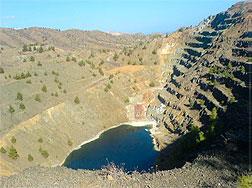
Fig. 10: The mining area of “Skouriotissa” on Troodos Mountain Cyprus
Slag and flora of Troodos Mountains as a source of drugs.
The waste from the metallurgical processing known as slag, is containing little amount of metals. These slags were used for the preparation of various drugs by the ancient Cypriot doctors.
Similarly, the flora of the Troodos Mountain is considered one of the most important floras in the whole of Europe. This rich biodiversity is due to the great variety of habitats that are formed because of the differences of altitude, the particular geology and the presence of water. Skillful ancient Cypriot botanists and doctors, have used this flora to produce a lot of drugs, a process that continues through centuries!
Several endemic plants are found exclusively in Troodos area.
Across Troodos mountain, several endemic plants have been recorded exclusively in Cyprus and no-where else in the world!
Another source of interest on Troodos Mountain is the medieval churches. Hidden away in the pine forests and in villages of the Troodos Mountains are numerous. Many of these churches have been put on the UNESCO World Heritage List, for their colorful frescoes and their unique architecture of pitched timber roofs.
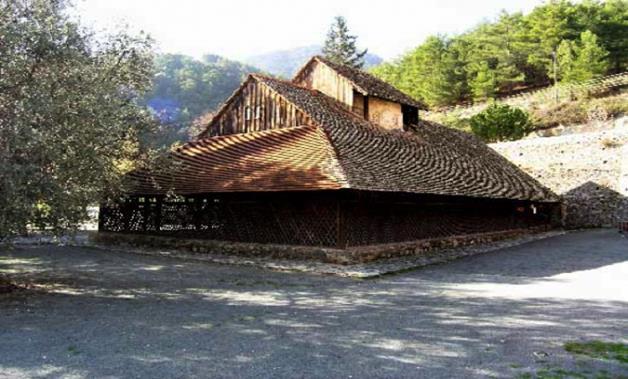
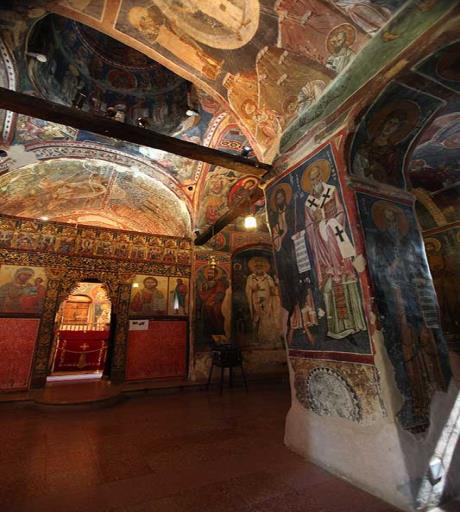
Fig 11a and Fig 11b: Medieval painted churches on Troodos Mountains
SUMMARY IN GREEK
Ο στόχος της εργασίας είναι να φωτίσει την εξέλιξη της ιατρικής και της Φαρμακολογίας στη Κύπρο από την αρχαιότητα μέχρι σήμερα, και να αναλύσει τη θεραπευτική χλωρίδα του νησιού, η οποία αποδείχθηκε δια μέσου των αιώνων να είναι αξιόλογη και σε πολλά σημεία πρωτότυπη ανά τον κόσμο.
Η διαδρομή αυτή, στηρίζεται πάνω σε αρχαιολογικά ευρήματα αλλά και σε γραπτά ιστορικά ντοκουμέντα, τα οποία επιβεβαιώνουν τη σπουδαιότητα της Κύπρου στους υπό εξέταση τομείς.
Η ιστορική διαδρομή που υιοθετήθηκε, ακολουθεί μια χρονική αλληλουχία πραγμάτων από των αρχαιοτάτων χρόνων μέχρι σήμερα, πράγμα που διευκολύνει την κατανόηση των γεγονότων κατά χρονολογική σειρά. Ενισχύεται το γραπτό κείμενο με εικόνες όπου κρίνεται αναγκαίο, και παράλληλα τονίζεται η σημασία του ορεινού όγκου του Τροόδους στο κέντρο του νησιού, ο οποίος δημιουργήθηκε από την σύγκρουση των πλακών της Αφρικής της Ασίας και της Ευρώπης προ αμνημονεύτων χρόνων, αναγκάζοντας το Τρόοδος να αναδυθεί από τα βάθη της θάλασσας και να περικλύσει στον όγκο του μια αξιόλογη συγκέντρωση ορυκτών στοιχείων, δημιουργώντας παράλληλα μια μοναδική πανίδα με σπουδαίες βοτανολογικές θεραπευτικές ιδιότητες, στη φαρμακολογία.
REFERENCES
Angelides N. (2016)
Ancient Medicine and Surgery in the Mediterranean. IN: A Multidisciplinary Approach to Cardiovascular Diseases. EDS: S. Novo, N. Angelides, J. Fletcher, K. Roztocil. PUPLISHER: Edizioni Minerva Medica; 2016; pp 1-5
Angelides N. (2019) Cyprus medicine and Botany through Centuries. Cyprus Medical Journal (CMR), Issue 11, Volume 4, Year 2019, ISSN 2421-8499, pp 15-20
Angelides N. (2020) Mediterranean Region. Book, published with ISBN 978-9963-9339-8-3; Writer, N. Angelides; pp 260
Angelides N. (2022) Byzantium: History, achievements and Medicine (Research).
Loukaides Th. (1953)
Medicine in Ancient Cyprus. Cyprus medical Journal 1953, vol VI, no 3-4
Kyriazis M. (2001) Medicine in Ancient Kition and Old Larnaca. Larnaca Municipality 2001
Dimitrakopoulos I, Dimitriades D., kaloudi C. et al. ((2015) Healthcare Services in Cyprus during the Ottoman Period 1571 – 1878 https://www.researchgate.net/publication/283894451_Healthcare_Services_in_Cyprus_during_the_Ottoman_Period_1571_-_1878
Michaelides, D. (2009). Medicine in Ancient Cyprus. In: M. Rossetto, M. Tsianikas, G. Couvalis and M. Palaktsoglou (Eds.) “Greek Research in Australia”: Proceedings of the Eighth Biennial International Conference of Greek Studies; Flinders University, Department of Languages: Adelaide, 93-106.
Tsoucalas G, Sgantzos M, Androutsos G. (2016) Hippocrates, principles on abdominal surgery in ancient Greece during the fifth century BC. Surg Innov; 23(2):212-213.
Rida PC, Livecche D, Ogden A, et al: (2015) The Noscapine chronicle: a pharmaco-historic biography of the opiate alkaloid family and its clinical applications. Med Res Rev; 35(5):1072-109







